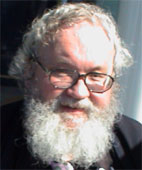Preußische Armee
Prussian Army During the Napoleonic Wars and at Waterloo.
In 1740s Prussia owned 85.000 troops which gave her the 4th largest army in Europe, even though her lands stood at 10th in order of size and only 13th in population ! Foreign generals and observers admired the Prussian military machine of 18th
and the Danes feared it
Frederick the Great imposed so spartan discipline that 400 officers "are said to have asked to resign".
According to Peter Hofschroer the army of 1813-14 was drawn almost entirely from the core provinces of the Kingdom of Prussia - whereas the army of 1815, consisted only in part of "old" Prussians. The Rhinelanders and to an extent the Westphalians were "new" Prussians of questionable loyalty. Also in 1815 a number of foreign, i.e. non-Prussian, formations had been amalgamated into the line and were, on paper at least, now considered regular formations, although it was really only after the Waterloo.
In March 1813 Landwehr (militia) was formed on the introduction of universal conscription
Schlesische Landwehr 1813 e.V.
1813 Landwehr militia - Google Search
1813 Landwehr site:de - Google Search
after 1864 ethnic danes fled north to avoid conscription and
if life and work was difficult in Copenhagen they went on to USA
prussian conscription - Google Search
BBC - History - The Western Front and the Birth of Total War: "The Prussian Army was a peacetime training organisation for a system of mass conscription controlled by a highly professional general staff. Soldiers returned to civilian life after two or three years, but could be recalled in the event of a war.
A well-developed bureaucracy and efficient railway system then mobilised and deployed the mass army, trained and ready to fight.
After 1871, the German system of mass peacetime conscription and a general staff to plan future wars based on railway deployment was copied throughout Europe.
The exception was Britain which, with the Royal Navy protecting it from invasion, relied on a long-service army of volunteers, supplemented by auxiliary forces from around its empire, including the Indian Army, the largest all-volunteer army in history."
In 1740s Prussia owned 85.000 troops which gave her the 4th largest army in Europe, even though her lands stood at 10th in order of size and only 13th in population ! Foreign generals and observers admired the Prussian military machine of 18th
and the Danes feared it
Frederick the Great imposed so spartan discipline that 400 officers "are said to have asked to resign".
According to Peter Hofschroer the army of 1813-14 was drawn almost entirely from the core provinces of the Kingdom of Prussia - whereas the army of 1815, consisted only in part of "old" Prussians. The Rhinelanders and to an extent the Westphalians were "new" Prussians of questionable loyalty. Also in 1815 a number of foreign, i.e. non-Prussian, formations had been amalgamated into the line and were, on paper at least, now considered regular formations, although it was really only after the Waterloo.
In March 1813 Landwehr (militia) was formed on the introduction of universal conscription
Schlesische Landwehr 1813 e.V.
1813 Landwehr militia - Google Search
1813 Landwehr site:de - Google Search
after 1864 ethnic danes fled north to avoid conscription and
if life and work was difficult in Copenhagen they went on to USA
prussian conscription - Google Search
BBC - History - The Western Front and the Birth of Total War: "The Prussian Army was a peacetime training organisation for a system of mass conscription controlled by a highly professional general staff. Soldiers returned to civilian life after two or three years, but could be recalled in the event of a war.
A well-developed bureaucracy and efficient railway system then mobilised and deployed the mass army, trained and ready to fight.
After 1871, the German system of mass peacetime conscription and a general staff to plan future wars based on railway deployment was copied throughout Europe.
The exception was Britain which, with the Royal Navy protecting it from invasion, relied on a long-service army of volunteers, supplemented by auxiliary forces from around its empire, including the Indian Army, the largest all-volunteer army in history."




0 Comments:
Post a Comment
<< Home